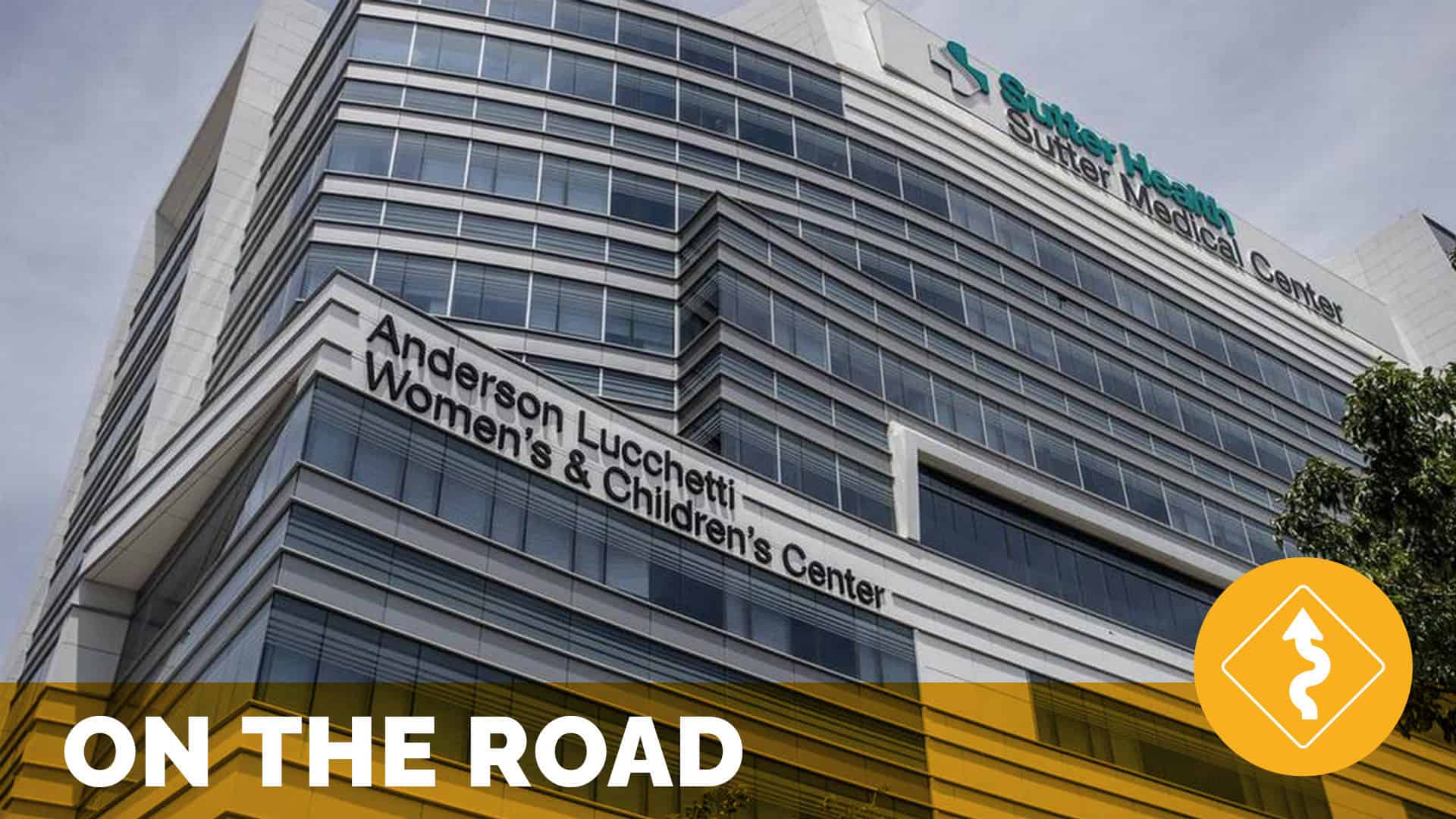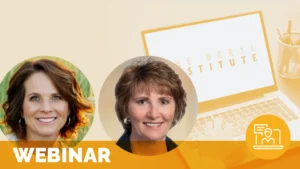Caring Inclusively: One system’s commitment to experience and mental health for patients and employees alike

On the Road with Sutter Health, Northern California – November 2019
by Tiffany Christensen, CPXP
Our latest On the Road took me to Sutter Health, a large integrated health system in Northern California with over 53,000 employees, 14,000 physicians and advanced practice clinicians, 24 hospitals, 2,000 ambulatory clinics and eight behavioral health centers.
Looking through the lens of Experience, I was curious to explore how a health system this large worked to provide a consistent experience across all of their touchpoints. In meeting with the system-level and local leadership teams, I learned that this was a challenge they had considered deeply and responded to with an innovative approach to leading these efforts.
Leading with Experience: An Innovative Org Chart
Don Wreden, M.D. senior vice president for the systemwide Office of Patient Experience, acknowledges that culture change is extremely challenging; “The gravitational pull to past legacies will always be strong, perhaps insurmountable, if we don’t have a North Star. So our North Star became those we serve.”
Most healthcare organizations today, especially the larger ones, choose to have separate departments for Safety, Quality and Experience. Sutter Health intentionally placed these areas within the Office of Patient Experience, a bold move in itself, but they did not stop there. Sutter Health’s innovative Org Structure includes having the system CNO and CMO report to Dr. Wreden within the Office of Patient Experience. In addition, many areas beyond Safety and Quality that are often found separate from Patient Experience fall under this system office:
- Clinical Integration
- Physician Leadership Development
- Nursing Leadership Accreditation and Licensure
- Research
- Variation Reduction
- Digital Patient Experience
- The Sutter Health Office of Patient Experience looks to their future with a clear vision:
Sutter Health’s Office of Patient Experience partners with and supports teams across our network to provide a consistently excellent and personalized experience for the patients and families we serve. Together, we inspire an organizational culture that empowers and engages care teams and patients alike in all aspects of care delivery to achieve the highest quality outcomes.
As I embarked on my day at Sutter Health, I would soon learn that this new way of operationalizing an Office of Patient Experience was far more than a reporting system. The impact was tangible and was felt by clinicians and patients alike.
Caring for the Caregivers
I met with the leadership team at Sutter Medical Center Sacramento (SMCS), and they shared that disparate tactics, a sole focus on HCHAPS, and a variety of “gimmicks” were used to drive change in the past, but that is no longer the case. With a new and innovative structure in place, there is a sincere dedication to a more authentic approach to experience grounded in a recognition that “improving patient experience requires improving the experience of everyone who comes in contact with that patient.”
One clear champion of this approach to improving patient experience through a focus on staff/clinician experience is Megan Gross, M.D., chief of staff at SMCS, who was visibly moved when talking about methods she personally uses when motivating physicians to care for themselves, their colleagues and their patients and families. Dr. Gross took on burnout as one of her priorities using the book, “The Power of Moments” by Chip Health and Dan Heath as inspiration. Partly due to reading this book, Dr. Gross and the Office of Patient Experience leadership team have embraced the power of story as a tool for improving experience and generating joy at work. Dr. Gross mused during our meeting, “How do you get joy back when working with your patients? Everyone has a story. I want to hear that story.” Moving forward, this leadership team valued story telling from all caregivers* across SMCS.
Caregiver stories are told in town halls, newsletters and other venues. Every quarter, the members of the SMCS leadership team assume a new role for the day, such as a surgery tech or patient access representative, as a method to “walk in their shoes” and not lose sight of everyone’s lived experience. In between, leaders are committed to “walk abouts” also known as leader rounding.
As a result in this overall shift in mindset, leaders report “this organization rarely brings up HCHAPs scores.” That’s not to say they don’t care about or work towards improving scores but the approach is quite different than it used to be. Rather than giving staff a tactic they must implement for “quiet at night” efforts, for example, leaders ask those working on the units “What can you do in your shift to make it quieter?” This improvement method creates buy-in because the “tactics” are driven by those actually doing the work. This approach was described to me as “having 4,000 consultants” (SMCS staff and physicians), who are the best individuals to identify problems and solutions. I found this to be such a simple but powerful way to look at innovation and improvement.
*All 4,000 staff at SMCS are referred to as caregivers; from physicians to the engineer in the plant to the valet.
Caring for the Community
Beyond the walls of the healthcare facilities, Sutter Heath is also dedicated to supporting the needs of the community with a special focus on mental health and support for non-domicile members of the community. The SMCS Emergency Department sees over 100,000 visits per year, among those visits are 6,733 non-domicile patient per year and 316 mental health patients per month. Rather than working just to get this population in and out of the Emergency Department, Sutter Health staff work hard to set patients up to be as safe and cared for as possible after discharge. The ED nurses I met with were careful to explain that some non-domicile patients prefer living on the street and, with this in mind, they work to keep them safe rather than try to convince them to change their lifestyle. This, in itself, is a fascinating look at Patient and Family Centered Care.
If a non-domicile patient is discharged at night, nurse leaders in the ED will invite them to stay in the waiting room until morning. Non-domicile patients are offered clean, new clothing and shoes, and even tarps, coats and other needed supplies, all donated by Sutter Health. Street nurses from Sutter Health also deliver care on the street to ensure patients are cared for beyond the walls of the hospital. In cooperation with a Sacramento Police task force, the ED case managers help with services and resources to parents and babies as needed, providing baby cribs to protect against SIDS, food, hotel, car seats, financial consulting and appointments with a pediatrician for follow up after an emergency visit.
The way in which these nurses, leaders and other care providers spoke about how they can help patients with specific needs and challenging life circumstances was consistently respectful and compassionate. Seeing and hearing how Sutter Health cares for non-domicile patients was proof for me that healthcare must always support an individual’s goals and preferences, no matter what those goals happen to be. I was both inspired and impressed by this Emergency Department’s efforts and culture.
Mental Health Across the System
In some cases, caring for the community may begin in the Sutter Health Emergency Department but community members have many other options for seeking mental health services throughout Sutter Health:
Sutter Center for Psychiatry, Sacramento (71 beds + Outpatient Care)
Alta Bates Medical Center, Oakland (89 beds)
California Pacific Medical Center, San Francisco (16 beds + Outpatient Care)
Kahi Mohala, Oahu (88 beds)
Mills Peninsula Medical Center, Burlingame (64 beds)
Palo Alto Medical Foundation, Palo Alto & Santa Cruz (Outpatient Care)
Sutter Gould Medical Foundation, Modesto (Outpatient Care)
Given how large the system is, coordination of mental health services across Sutter Health was a real challenge, despite the number of beds, outpatient services, and walk-in care offered. The Sutter Health central intake center receives 600 messages a month with referrals coming from Sutter Health providers, other facilities, community members and private mental health providers.
So how does a large integrated health system coordinate care when there can be a shortage of beds or available mental health professionals? How do primary care providers make a mental health referral and ensure it doesn’t fall through the cracks, thus putting that patient at risk of not getting help or, worse, in danger of self-harm without help on the way?
Sutter Health has tackled some of these common mental health challenges through a newly implemented technology that facilitates the matching of patients with insurance-supported and available providers in their geographic region or scope of specific care needs. The system also mines EPIC for red flags regarding mental health screenings and alerts the primary care provider to take action. Along with this technology, Sutter Health uses tele-psychiatry in the emergency department and with primary care providers to provide immediate treatment when needed, preventing care escalation or unnecessary inpatient admission. There are 16 Sutter Health hospitals leveraging the tele-psychiatry program, successfully engaging over 5,500 care consultations to date.
Seeing technology used effectively, allowing improved access, and creating another safety mechanism for patients is very exciting. At the same time, technology can never replace the caring of another human being, which Sutter Health emphasizes through a focus on “technology that enables human connection.”
Staff Self-Care Leads to Better Patient Care
My last stop on my tour of Sutter Health was the Sutter Center for Psychiatry, an inpatient and outpatient psychiatric care center designed for patients who may benefit from different levels of mental health interventions and care.
The outpatient services served patients who have voluntarily “admitted” into the group-based program and commit to a high level of participation. Patients attending the “Partial Hospital Program” participate five days a week for six hours a day and those in the “Intensive Outpatient Program” participate five days a week for three hours a day. The group sessions include topics such as Grief, Loss and Change, Parent Support, Spiritual Care, Healthy Lifestyles, Music Therapy and Medication Education.
Immediately upon arrival, I found the staff in outpatient services to be extremely warm and welcoming. We did not have a long time to chat as they were busy with many patient support groups and other activities to attend to, but I learned a lot in a short amount of time. I met with a very diverse group of mental health professionals who shared that they are very intentional about how they speak with their patients (and their colleagues too), being mindful of each individual’s culture, lived experiences, and preferences, and ensuring they are creating a respectful, healing and safe care environment. On that subject they so beautifully articulated their philosophy about safety: “We must create a safe space so patients can get vulnerable. Safety is not only physical… it’s a feeling where they can act themselves and be vulnerable.”
This group has most certainly connected to a greater purpose. In fact, they all expressed an understanding that helping patients in this outpatient program has a positive ripple effect throughout their community.
The staff also remarked that creating a safe space for patients, along with having a strong connection to their peers provides an opportunity to also care for themselves and grow individually and professionally – this self-compassion and awareness of staff is a key factor to the success of the program overall.
As they dispersed to rejoin their patients, they mused that most of the complaints they get are about the food. They all laughed as one person said; “If the worst complaint is that we ran out of coffee and bananas…then we’re doing well.”
Caring for the Mental Health of Employees
Dedication to improving the experience of those who work at Sutter Health does not end with leader rounding and opportunities to be engaged in improvement. In fact, it goes much deeper. With a keen awareness that mental health affects all of us, Sutter Health has created a workplace mental health focus and are currently developing a curriculum to remind and educate leaders, staff and clinicians to think differently about how to work together and manage others.
The first step is in creating an environment in which the workforce feels safe in sharing personal issues that may be affecting their job performance. As an example, if an employee is showing up late to work there may have been an immediate corrective approach to this: “You were late three days in a row, this has to stop.” Alternatively, a manager can approach the issue with more compassion and in the spirit of understanding and being helpful: “Help me understand what’s going on…” and offering support for those who are struggling. This mindset comes with training and a commitment to the “humans caring for humans” in healthcare.
47,173 Americans died by suicide in 2017
50% of Americans who die by suicide have seen their primary care provider within the past 30 days
To bring a striking reality to this crisis, they applied predictive stats for 2019 to Sutter Health’s workforce: one in 100 people will attempt suicide, and nine will die by suicide
Sutter Health has taken brave steps to proactively work to prevent these startling predictions through programs like the one they named “Suicide CPR,” an educational program on how to help a colleague who is at risk for suicide. Along with Suicide CPR, Sutter Health offers the workforce other opportunities to innovate and build more supportive networks for those who need support. In a culture where many people aren’t comfortable even talking about suicide, much less being open to creating programs to prevent it among friends and colleagues, I found this approach to be extremely visionary, compassionate and uniquely honest. Amazingly, this ability to be honest about mental health realities did not end here.
The Patient Perspective
It was refreshing to hear from the staff at the Sutter Center for Psychiatry, and to validate their perspective on the care delivery experience, I also had the chance to speak with three patients who graduated from the outpatient programs, and some who began their mental health care journey in the SMCS ED and inpatient units.
When I spoke with these patients, I asked them to define their experience at Sutter Health and the word they all settled on was “safe.” They each described the environment as safe, largely due to good staff communication. “Good staff communication” meant to them that the staff sees those participating in the programs as human beings. One program participant stated, “They saw my strengths, despite how broken I was.”
One man recalled checking into the program for the first time with a front desk staff member; “I checked in and told part of my story. I looked up feeling shame and expecting judgment but the person had tears in their eyes. That really got my attention.”
They agreed that the care at Sutter Health was a healing and transformative process for them. They attributed this to the fact that they had been made to feel comfortable disclosing what they were going through, the staff was always positive and sensitive, they experienced great group facilitation, and a nice break during lunch where they could talk with other participants about their lives in general, not just what they were going through. The one sentiment that stopped me in my tracks, however, was the general agreement that this program worked not only because of what the staff DID but because of WHO the staff were and how they were willing to share their own lived experiences with the patients. One patient stated, and all the others agreed, “The staff does their own healing work on themselves as well.”
For me, this was a profound moment. How would the program participants be able to so easily articulate many of the exact qualities staff shared about themselves? How would they know the staff is dedicated to their own mental health so that they could, in turn, support the healing of those in the program? The culture of “Human beings caring for human beings” had shown up again in a way that was quite unexpected. This was one of those moments in healthcare I will never forget.
From Passive to Active
I walked away from my tour of Sutter Health exhausted, yet filled with hope. Seeing the dedication this health system to the experience of their patients, families, staff and clinicians was truly inspiring. By virtue of the fact that their focus on experience began with a major change to the organizational structure and has been realized and embraced on the care delivery front lines, it’s clear this commitment was sincere.
As a final reflection, a patient I spoke with at the Sutter Center for Psychiatry shared this sentiment: “This building is not a magic building. We are obliged as attendees to work (on our health) every day. This program helps patients go from passive to active.” This sentiment seems to also be true for the changes made by Sutter Health’s bold leadership team and compassionate teams. Nothing they have done is magic, it requires a continued focus and effort, and they have opened the door for their organization to go from passive to active. This has been an honor to witness and I want to sincerely thank Sutter Health for opening their doors so that we can share their journey with our community!
Related content
-
 Infrastructure & Governance | Patient Family & Community Engagement
Infrastructure & Governance | Patient Family & Community EngagementPFAC Restructure: Expanding Councils, Enhancing Quality, Securing Leader Buy-In
2pm ET / 1pm CT / 12pm MT / 11am PT – Join us for an in-depth session on innovative strategies for restructuring Patient and Family Advisory Councils (PFACs) to align with organizational goals and improve patient-centered care. Discover how to expand PFACs to better meet evolving needs, enhance the quality of patient engagement, and
Learn more -
 Staff & Provider Engagement
Staff & Provider EngagementBeyond the White Coat: Mental Health in the Life of a Junior Doctor
This article underscores the profound need for a culture that prioritises mental health, especially among doctors navigating their early careers. This personal narrative also highlights the importance of overcoming this and the challenges one can face while trying to do so. A journey of a 30-year-old doctor, as she hurdled along life with the passing
Learn more -
 Culture & Leadership | Staff & Provider Engagement
Culture & Leadership | Staff & Provider EngagementRising Strong: Team Resilience Strategies
Join us for an insightful webinar where we’ll share practical resilience tools and strategies that greatly enhanced the well-being of a 50-member caregiver team. This team, which manages complaints and grievances for 33 hospitals and 385 clinics across four states, saw their Patient Engagement Scores climb from 63% to 83%, outperforming Intermountain Health’s overall employee
Learn more
